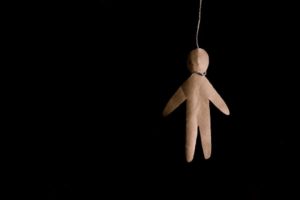Need for awareness to prevent suicides

Dr Samir Parikh
The word ‘suicide’ is more often than not shrouded by stigma and misconceptions, which further increases the hesitation in talking about it. In fact, at times simply hearing the mention of the word could end up evoking many powerful images, emotions and even judgments in our minds. Therefore, it becomes important to ensure we clarify common myths and misconceptions associated with suicide, and at the same time also think about the significance of actually working towards a model or a policy to prevent such incidents in the future.
Busting myths and misconceptions around suicide
Recognised as one of the leading causes of death among teenagers worldwide, suicide occurs throughout the lifespan and was the second leading cause of death among 15-29-year old’s globally in 2012.
First and foremost, it is important to recognise that, contrary to popular opinion, suicide is actually preventable. Yes, there are clear warning signs of people who might be contemplating suicide. Therefore, by spreading adequate awareness it is actually possible to ensure a timely identification of individuals contemplating suicide and this in itself can be a significant step towards the prevention of such incidents.
Further, a complete knowledge and accurate information among the members of the society is essential in order to ensure the de-stigmatisation of suicide and to defeat the hesitation in the reporting and talking about such an ideation. Instead of overlooking the warning signs as attention seeking tactics, or not taking them seriously, it is important to be vigilant, and to know how to respond to them.
Working towards a prevention policy
It is important for us to realise that suicide is preventable. Therefore, creating an awareness and educating people about the signs that could be indicative of their distress is imperative. An adequate peer support and social network system, family support, school as well as community connectedness could serve as major protective factors.
In fact, the promotion of active social skills training is a major step that needs to be encouraged in order to help children and adolescents develop healthier coping mechanisms. Efforts should be made to focus on building trust and rapport with them, so as to enable an atmosphere of open communication, encouraging the reporting and sharing of their thoughts and feelings easily and in an open, and threat-free non-judgmental environment.
Parent and community awareness programmes need to be created to encourage parental notification and involvement. Forming a multi-component model for awareness building, preventive strategies as well as training for adequate intervention-based approaches for parents, teachers, as well as students is essential. It is necessary to spread awareness about accessibility as well as referrals to appropriate professional help of counsellors and psychiatrists.
Further, there is a need for the establishment of a student assistance/ helpline programme to identify risk factors for suicide, and the implementation of a prevention policy to promote adolescents’ resilience and healthy socio-emotional development. It is the collective responsibility of all of us, including parents, teachers, peers, celebrities and the role models, the media, the stakeholders as well as frontline workers and gatekeepers to be sensitive to the warning signs as well as being aware of how to or how not to respond to such signs appropriately. We all need to collaborate to ensure we create a sensitised awareness in the society to build a robust prevention policy for the country.
Dr Parikh is Director and HOD, Department of Mental Health and Behavioural Sciences, Fortis Healthcare



